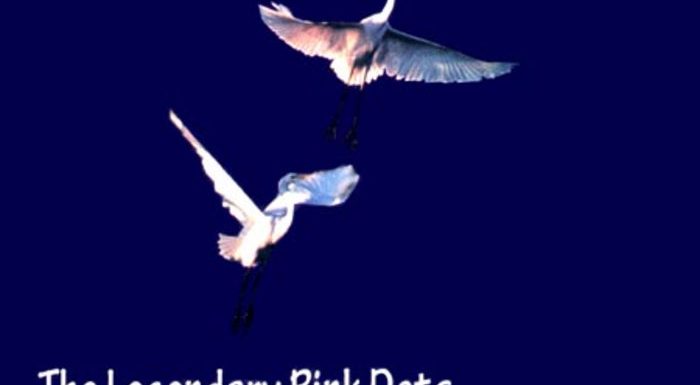

Edward Ka-Spel’s brilliance with The Legendary Pink Dots is to introduce us to isolated characters and then immerse us in their world-view through expansive and mysterious soundscapes. He begins with the most restricted, infinitesimal point of consciousness and then slowly expands it outward towards a state of ‘cosmic consciousness’ (to use the phrase of 1960s psychonauts). Musically, he often follows this template of expansion, with simple melody lines repeating and layering in increased complexity of texture. Much of the LPD’s music is an undertaking to help the listener (and perhaps composer) escape his/her own head. Lyrical phrases, musical motifs, album titles and themes recur across decades, but tonal shifts between albums are slow and subtle. Hopefully, The Legendary Dots Project, like the Residents and Sparks projects before, will provide the keen reader and listener with a giddy entry-point into the Legendary Pink Dots’ musical world. Fulfil the prophecy!
Chemical Playschool 11, 12 & 13 (2001)
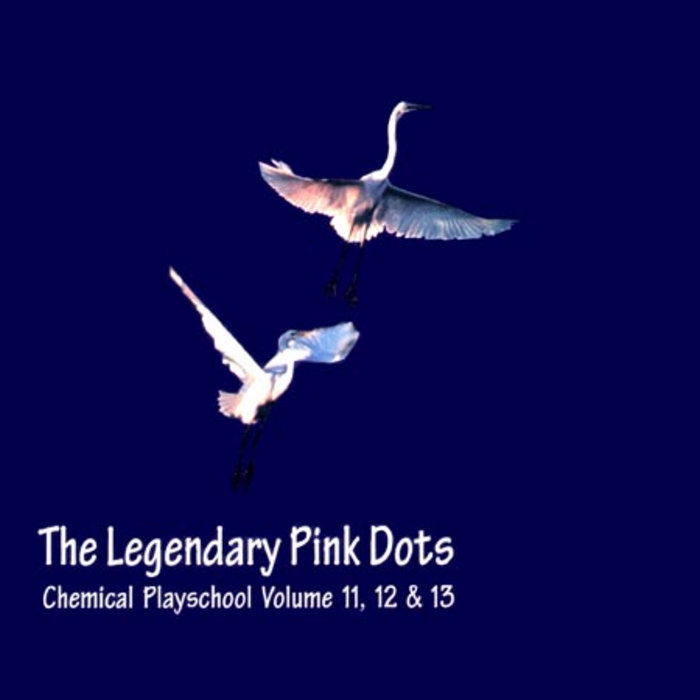
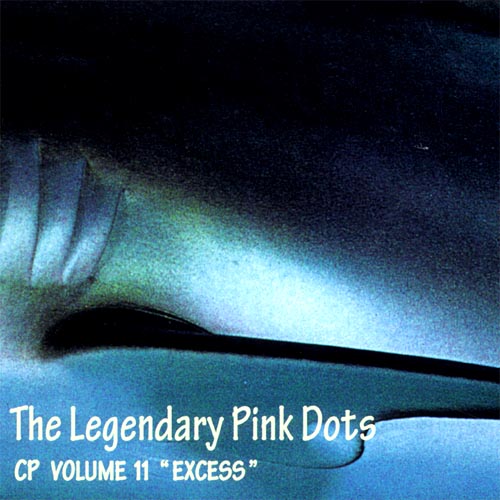
Volume 11: Excess
Tom: ‘The Truth is Out There’. A spaceship hovering. Plangent MIDI beckons us into these 68 minutes. Then stray, jocularly ominous keyboard cor anglais notes, followed by a truly great antic, antique futurist chord sequence. This is a gravely jaunty song of the Black Prince, with that old time concern: “The trains do not run on time”. This sedate waltz feels pitched somewhere between the lurid, cankered chaos of Poe, and/or Corman’s The Masque of the Red Death and Leonora Carrington’s surreal tales, one of which actually concerns a debutante. Is this in waltz time? This fine opening gives way to mild tinkling and circling keyboard around 4:30.
Around and after 6:00, we have distant jazz sounds and a sedate piano beckons us on board the ancient spaceship. This also includes some kind of flute, guitar and a Ka-Spel sung narrative, which again refers to religion but also mice, and feels like it could soundtrack parts of Enda Walsh’s absurdist, subtly political Netflix portmanteau animation, The House (2022). The music is deft, low-key progressive psychedelia which feels to me rather like Popol Vuh’s eerily becalmed 1970s film underscores. Tis more chilled than the brilliantly bonkers French, or is that Kobaian, band Magma! The elusive netherworld is enveloped by distortion around 10:40, but re-emerges to take aural centre stage again. Before 12:00, we hear backwards tape-reverse effects and then return to the quiet cavernous drift of this spaced-out voyage. It all continues until 14:00 and has been most welcome.
Then, some distant industrial contraption, perhaps even James Dearden’s, which engulfed Richard O’Brien in 1977. Replaced by a ticking, minimal percussion sound at 14.45. I’m not quite so gripped by the solid enough tune that takes us to 18mins. Though “My, our heritage, our sin…” points to public and private wrongs as old as time, beyond even Britain, more universal.
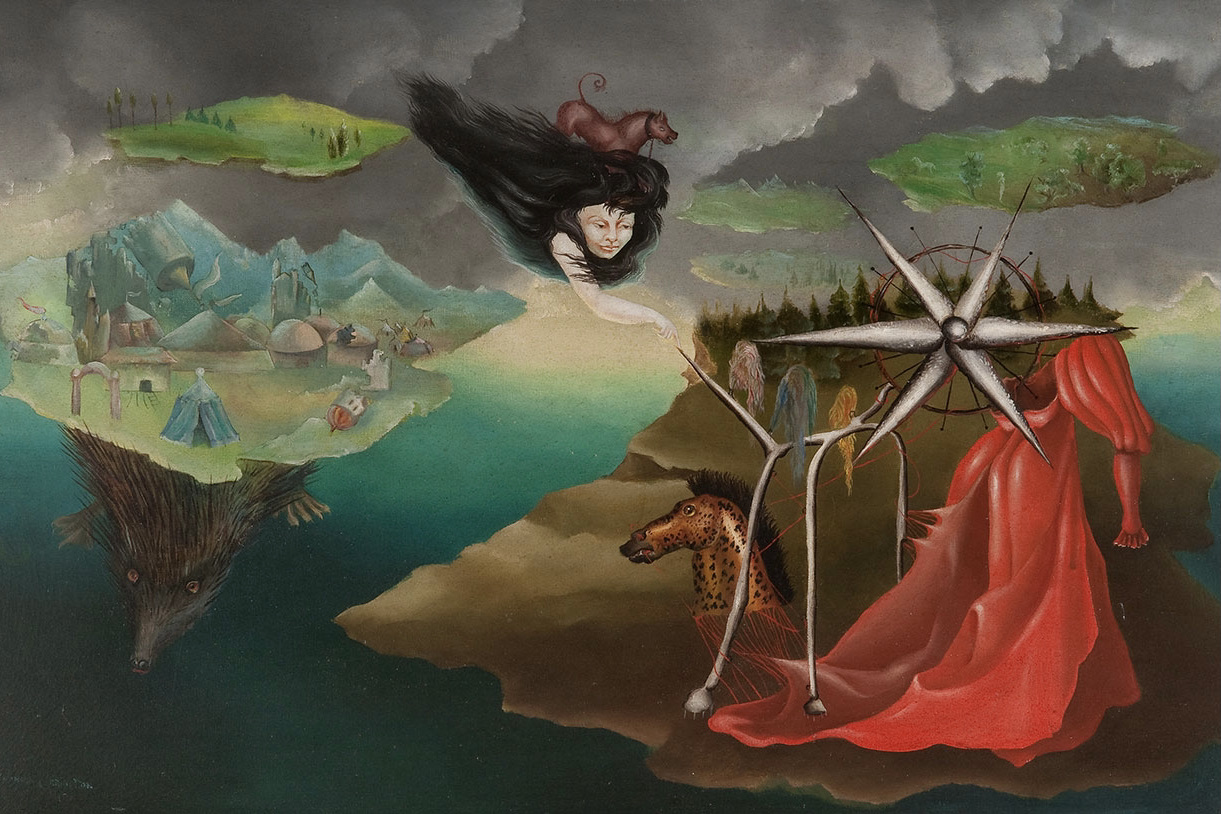
A leisurely, steady beat and synth squiggles, pitch and polarities being shifted. The drumming picks up, and this piece reclines out like a Ballardian lizard crawling into a human-free zone. Good, but not one of the more memorable LPD instrumentals. That said, some indistinct chanting voices become audible and this tribal incantation wheedles its way into your consciousness and I certainly don’t mind how this keeps going inexorably until the 27min mark, and seagulls. ‘London’s Burning’ seems to be the next number. A blade and more rodents. A gas mask. This woozy and uneasy slow song is accompanied by found sounds of playgrounds. Synth notes, chords and sounds seem to last, are held onto, indefinitely. Juddering guitar eruptions sprawl, slowly. It’s all like a drifting spacecraft, a portent above the capital. Certainly a highlight here.
The following piece has that old LPD standby of gabbled, cut-up vocal sounds, alongside Ka-Spel intoning phrases like “clean as a whistle!” while a low-key organ sound circles round and round. This gives way before 39mins to a hammering percussive sound and enveloping synth effects and distended, distant wailing. At 42mins, some stillness and dim science fiction bleeps and horror bells; such angular chills make you wish that the LPDs could soundtrack the first British film from a Ramsey Campbell short story. From 46mins, we have lovely, serene synth pad textures not all that far from a beat-less Orbital, say. At times this becomes almost submerged by hovering, loud interference, but never totally. Nearing 49mins, plangent, jazz-adjacent piano, though this seems a brief interlude, as nearing 50mins, we have a distorted cry followed by low bass notes and a niggling sound like a bird in the rafters.
A skittering, DIY drumstick rhythm is bashed out and from 51mins, enter horns and guitar and a lumbering, loping and swampy sound that vaguely reminds me of The The’s Hanky Panky (1995), if more refracted and abstract. This slightly more uninteresting piece gives way to loud dissolution and then from 56mins, a Ka-Spel narrative enters, with the same few chords repeating steadily, mercilessly – something I tried to ape for some of my own music for series 2 of the podcast.
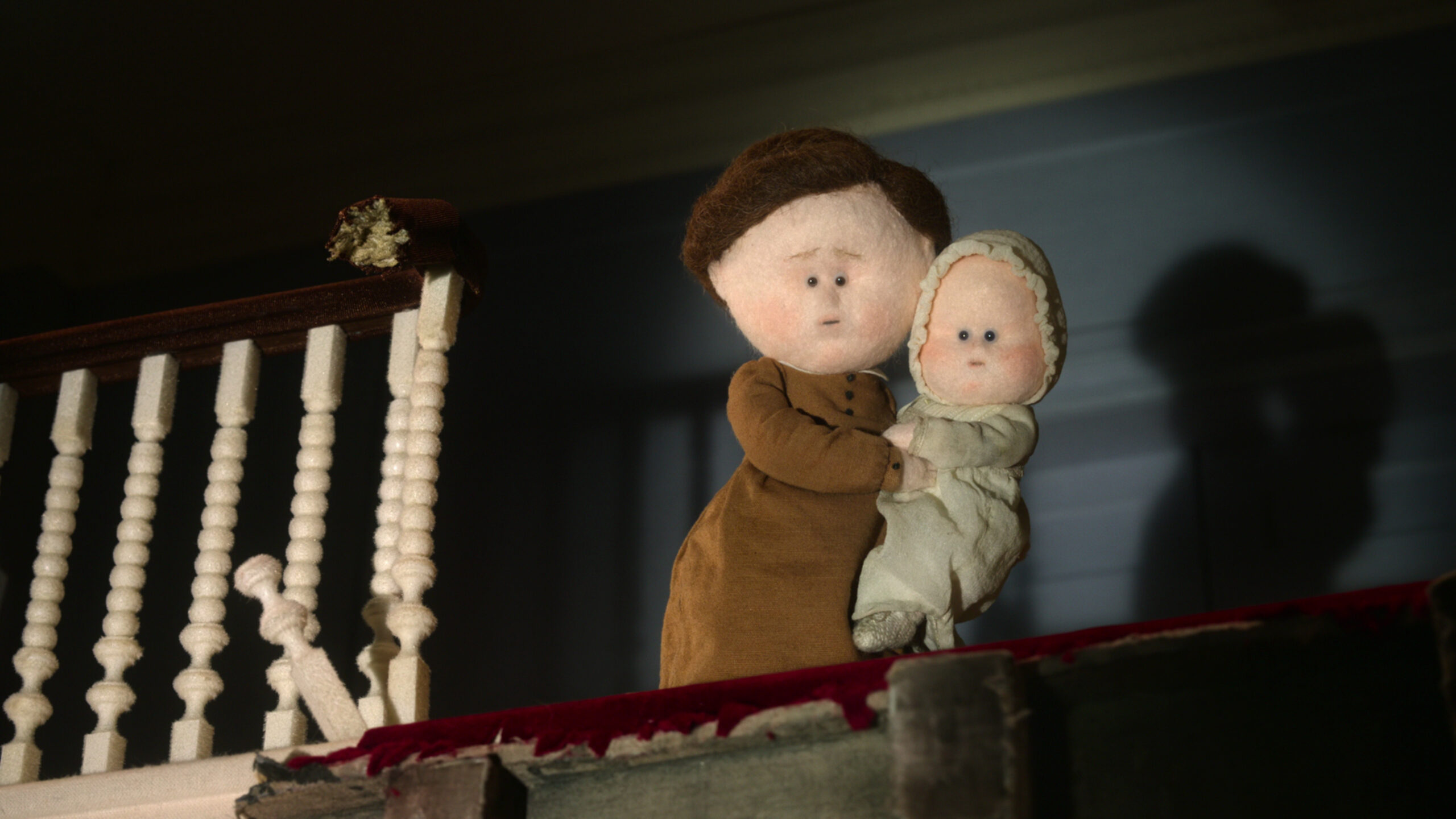
This volume, and indeed this whole vast release, is ideal headphones music. There are Ka-Spel vocals at times, but this is the Dots in an especially expansive ambient and film soundtrack mode. From 58mins, you have a story which seems to advance on ‘The Saucers Are Coming’. Somebody close to the narrator has died in the dream and he feels guilty and dirty. The DJ speaking a language which is “all fractured and backwards, I couldn’t put it together”. A dream in a tunnel. The house missing its stairs, “as if they had never been there… All I wanted to do was get out!” This very directly anticipates the first and great story in The House and its nightmarish tale of a “home” space that contracts and changes. The synth gives way and there’s a tolling drum like in a horror film and the night sky “pressed itself against me, like it wanted to hug me”. By 64mins, this gives way to a Fripp-ian sequence of held, blazing guitar notes and synth strings, which forms a stately coda, there’s a feeling of serene, peaceful sleep. Volume 11 ‘in the Jar…O’, or is this ‘Schatten’, has a fairly indistinct, distant ambient drift, vaguely ominous, unresolved, all fairly well done, but I don’t think it’s going to be one that lodges in the noggin all that deeply.

Adam: Chemical Playschool 11, 12 & 13 is a three-hour epic conceived as one mammoth piece, which means it should not, strictly, be considered as a series as songs, but rather as an enveloping auditory journey. Indeed, on the Dots’ Bandcamp page for the album, Ka-Spel writes that the project took a full year to produce, recollecting that “around the 9 month mark, the idea came that the listener should in fact be tied to his or her armchair with the 3 cds lined up in a cd changer”. Clearly moving from cassette and vinyl to cd releases brought with it some exciting possibilities!
However, having spent the last year in teaching training, the demands of lesson planning and labyrinthine paperwork have not left me with three-hour stretches in which to submerge myself fully in the band’s imperfect magnum opus. This is a shame since CP 11, 12 & 13 is too opaque and obscure a release to be enjoyed as background music, demanding concentration and a decent pair of headphones. Indeed, outside of ambient works like Brian Eno’s Woodbridge-inspired Ambient 4: On Land (1982) or The Orb’s Adventures Beyond the Ultraworld (1991) this is the closest music can come to psychogeography without being a straight-up field recording. We pass through time-haunted meadows, suspiciously opulent banquet halls, corroded shopping districts, bourgie restaurants, 16mm 1970s film sets, citadel chambers, astral planes… However, much like walking simulator games, glimpses of radiant beauty are interspersed between stretches of aimless, occasionally tedious, wandering.
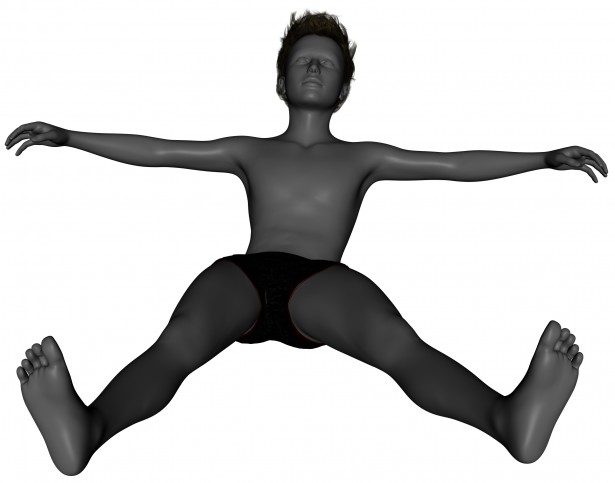
For new listeners [though, frankly, this would be a bizarre and faintly masochistic place to start one’s journey with the Dots] what will make the journey potentially forbidding is the fact that ‘Chemical Playschool 11 Part 1‘ (as it exists on Bandcamp) sounds like listening to an occult ritual through a thick hotel wall. You know that exciting and probably illicit things are happening on the other side of the wall, but your experience is as muffled and frustrating as Sargeant Howie’s during the infamous ‘Landlord’s Daughter’ scene in The Wicker Man (1973). Over two decades into their musical evolution, the Dots – especially Phil Knight – were hardly strangers to both sound collage and involved, lengthy experimental pieces, most notably on 1993’s Malachai (Shadow Weaver Part 2). However, Malachai had the benefit of Steven Stapleton’s organic, grounded approach to timbre… whereas Chemical Playschool 11 is often floaty when it’s not claustrophobic, and claustrophobic when it’s not floaty. In fairness, Ka-Spel has also written on the Bandcamp that the intention for the project was for the listener to leave his or her body and fly “around a darkened room, connected yet disconnected with the “real” world”. This is a laudable ambition, but it takes some time to fly. ‘CP 11 Part 1’ feels like a bird stretching its wings and trying to take off, not quite managing to get airborne.
Listening through a pair of headphones, the moments of ‘CP 11 Part 1’ that provided me with some elevation were:
- At around 7:00 minutes in when a languid keyboard melody starts repeating (a melody that I think might get reprised some years later in 2013 on ‘No Matter What You Do’).
- The unexpected exclamation of “I believe in Jesus Christ” at 8:30 (which I rather suspect is true of the narrator but not of Ka-Spel!)
- The harmonics at 10:00 (… at least, I think they were guitar harmonics… someone might have been doing something unusual with a flute!)
- A few seconds around 18:50 because of the rhythmic drumming when I fell momentarily into a trance-state
- The wash of synth that finishes the track that put me in mind of an underwater kingdom.
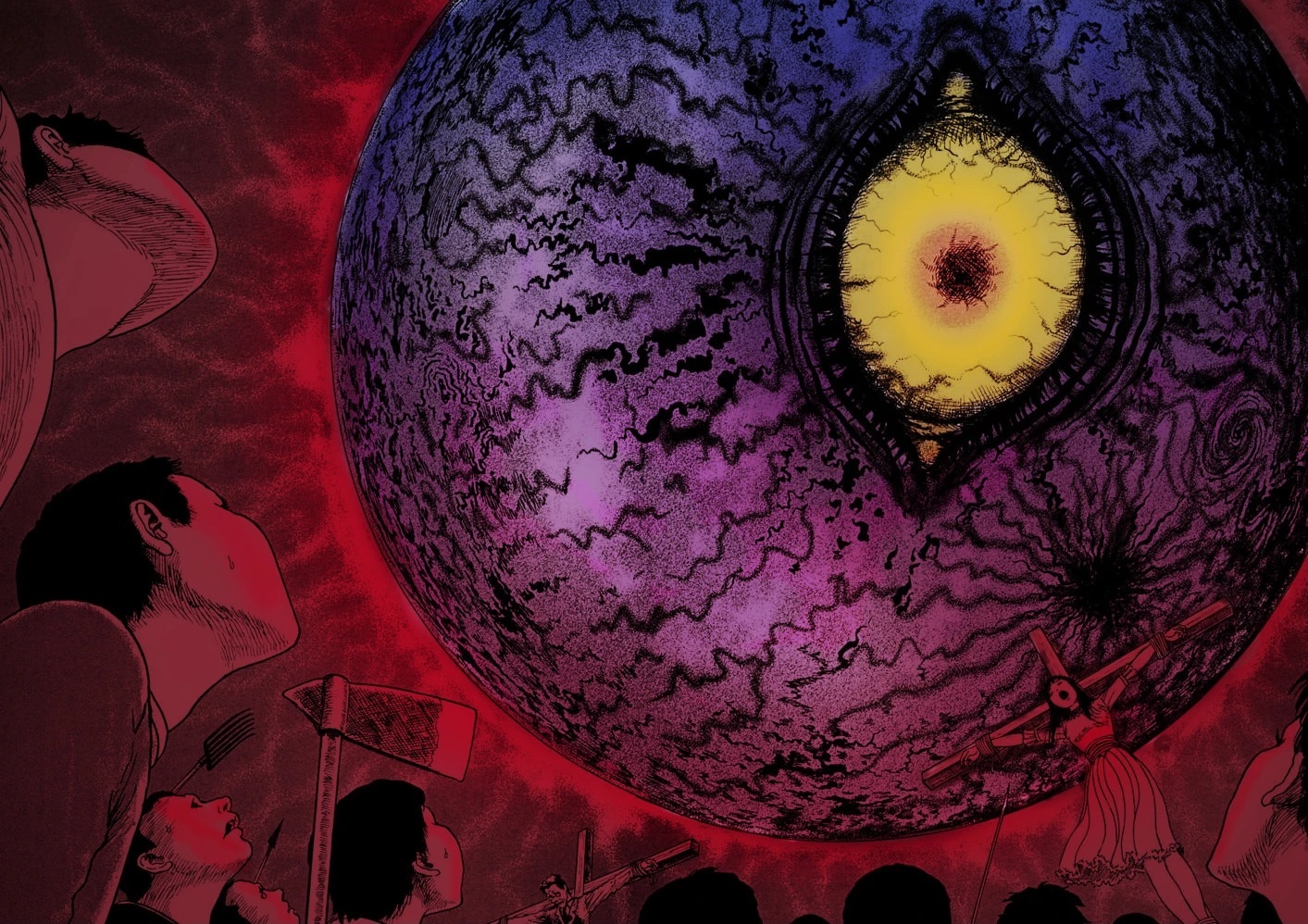
‘CP 11 Part 2‘ is stronger and more involving, largely consisting of the track ’10th Shade’, which originally appeared on the LP edition of Nemesis Online (1998). In my review for that album I described it as “a wonderfully unsettling Ka-Spel monologue to a dark ambient piece by Phil, which recalls the weird fiction of Robert Aickman”. The track begins with a gloaming soundscape that emerges from a krautrock-style industrial jam of rumbling percussion, languid subterranean bass and hypnotic horns. The story, when underway, is narrated by Ka-Spel in first person… recounting how he had a dream in which he was stuck in a tunnel and someone died. He awoke feeling guilty and tainted by this dream and tries to start the day with a nice cup of coffee… only the kettle doesn’t boil… “It was as if the physical laws we depend upon ceased to be effective”. He turned on the radio but all that comes out sounds garbled to him. Then he can’t find the door. And the stairs have gone. Escaping through a window he walks and walks until soon the darkness comes. It settle like a ceiling above his head. He falls to his knees. The darkness keeps pressing in until he has less space to move than in a coffin. And there he stays. For eternity. It is a straightforward tale of cosmic horror straightforwardly told, but the effect is chillingly claustrophobic, anticipating the best of Ka-Spel’s now annual Halloween soundscape monologues. This strange journey is capped by the eerie but calming ‘CP 11 Part 3’, which consists of ‘Schatten‘ from the extended Nemesis Online. A commentator on YouTube mentioned they were listening to it while reading Junji Ito’s horror manga Uzumaki (1998-1999) which strikes me as a good call.

Volume 12: Where the Hell????
Tom: ‘Volume 12 Where the Hell????’ opens with ‘Guinevere’ emerging from buzzing notes. This has a clomping, watery grave drum sound and minimal, ambient noises infusing a stark Gothic tale with a dank sweep. Sooty’s in heaven…
This 56-minute volume resembles a busier kaleidoscope of odd fragments, compared with the sedater, slow cinema pacing of ‘Volume 11’. ‘You Again’ is a lizard jam, and a lizard eating jam. It seems to be yet another Ka-Spel tale which might be addressing God, a dirt digging journalist or a “bogeyman”. “Face me, I demand it!” There’s great, storming fiery guitar in a piece which crosses Neu! with Raymond Briggs and ends with a ghostly lullaby and EK muttering “insane…”

Third up, ‘Vavavavava’ is especially great. An aquatic space sea shanty without words but with clicking metronomic clock beat. This strongly evokes the inner space outer space dream world loveliness of electronic pioneer Raymond Scott’s incredibly ahead of their time Soothing Sounds for Baby (1962) volumes, but also with added plangent lead guitar curling away into the ether.
‘Christmas on a Sun Spot’ feels like a sea shanty in its dinky churn and is a more low-key variant of ‘Fifteen Flies in the Marmalade‘ [from 1985’s Asylum] and the Dots’ previous maritime morsels. Then, aptly, ‘Shanty’, which opens with a grave, repeating minor-key riff. After 19mins, this gives way to waddling percussion and a 1980s British telly keyboard lead, which treads daintily, forlornly. Latterly, this shifts into a recursive loop back into the stormy waters of ‘You Again’ blended with ‘Vavavavava’ guitar.
‘Rascal Hlmut’, a Gothic abode of worthless treasures, has the sort of Ka-Spel refrain we can hold onto: “Someone’s out there…”, which becomes “He’s out there…!” Cantering train like synth and MIDI sounds all work very well indeed in another minor delight, which resolves into ‘Bridge’, dissonant plucked strings and the unmistakeable sound of rain.
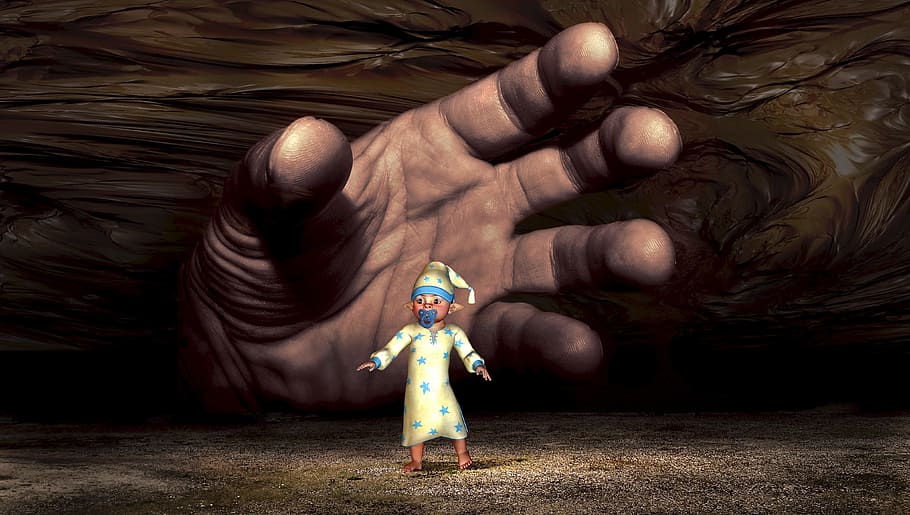
‘Where We’d Choose To Be’ is the trip becoming increasingly bad after these ominous portents. Squelching and percolating synth and clattering, treated drums. Distorted pitch-shifted vocal evokes a nightmarish cartoon duck, crying what might be “Heed me!” or possibly “Need me!” with malign urgency. Now, this is the “someone” who is out there and it’s… unspeakable, silly and disturbing: these adjectives ineffably conjoined. This veers into, ganders at, space rock drift and squelching tumult. Again, there’s powerful, incredibly deft guitar work from Edwin von Trippenhof. Around the 35 minute mark, we have spacey rave bacchanal sounds without the beats, unmoored in space, and dark shadows. What a sequence of music this all is!
Then, becoming in ‘Snarling At My Shadow’, some vaguely 1920s-30s Weimar Germany type singing on a dilapidated gramophone, clearly a mysterious sample. A piece of a cosmic, ancient and futuristic zodiacal jigsaw. It warps by the end, into a lower pitch. Then, a low-key, long section of rather glitch-like cut-up vocals and distant percussion and looped piano in stasis. There’s somewhat more of a drift nearer the close, into a swirling beat-less musique concrète and clay, constructing modernist cathedrals of doom. Then, a similar shifting refrain to when we had the metronomic rhythm earlier, now sans clock. And then a brief after-burst like those codas The Beatles used in 1967.
I’m not entirely sure where ‘And My Shadow Snarled At Me’ comes in or whether it indeed does at all… It must, but then I suppose that focusing on these track titles is really just a futile, if human, attempt to pin this incredible expansive voyage down into manageable nuggets.

Adam: I made the above collage with a throbbing hand and stinging arm, having come off my bike when I swerved to avoid an enormous lorry chuntering towards me down a country backroad (to my discredit I then stuck two fingers up at an innocent driver who didn’t stop to check how I was in lieu of me being able to swear at the lorry driver). As such, there is rather more pain and discordance in the collage than present in ‘CP 12 Part 1’. Despite some blistering moments that sound as though warring warlocks and witches have cracked the Heavens open, there are also some dreamy revelries and rockpools amongst the auditory carnage. I may be very mildly concussed [nothing on Tom’s dedication to the Dots Project during his brain surgery] and still a little shaken up, but I felt I really needed those moments of respite in amongst the harshly-textured miasmas of noise that comprise sections of this part of the album. If I ever go out clubbing in an industrial wasteland, get drunk, jack myself into an VR-enabled Augmented Reality Game and then, my stereoscopic vision glitching, stumble my way down a wharf where I am shanghaied by sailors and keelhauled, the VR helmet still afixed firmly on my shattered noggin… then this is the track I want to be listening to while it happens.
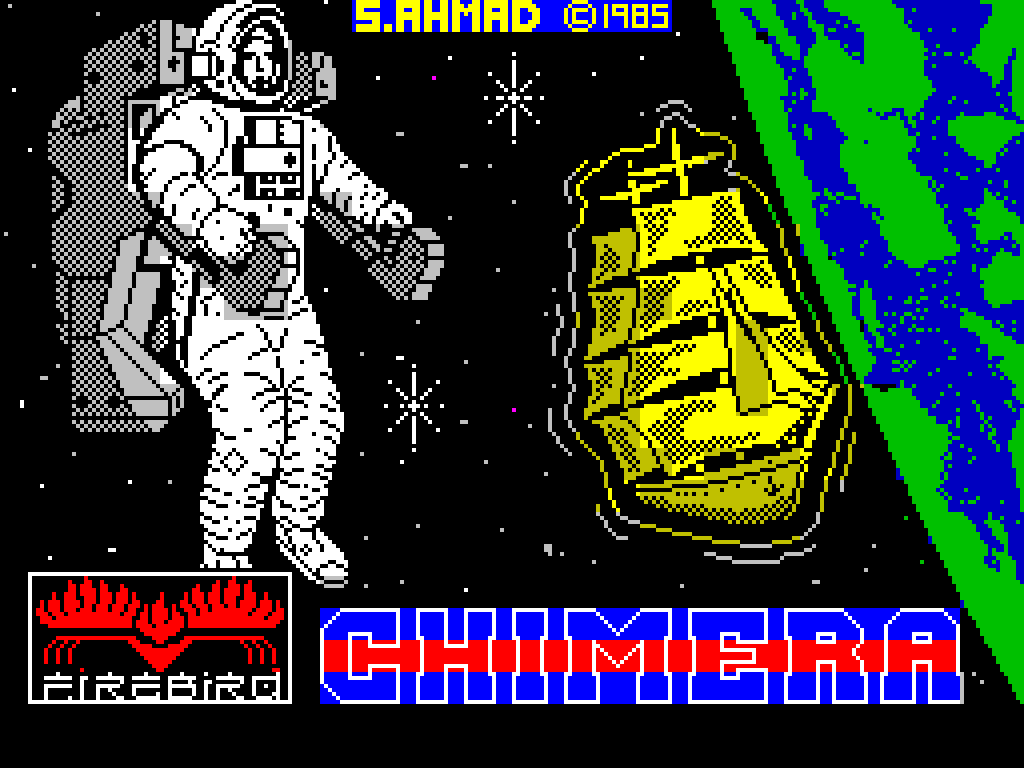
The track begins with a terrible crystalline ringing before a percussive clunking (as from a wooden machine) keeps time as Ka-Spel dryly relates an inscrutable Rapunzel-like tale that faintly recalls ‘Princess Coldheart’ from 1990’s Crushed Velvet Apocalypse. It is cold, barren, inhospitable material (enlivened by auditory scribbes of radio noise) until, at almost 5:00 minutes in, the kind of ancient synthesizer noise that characterised the earliest Dots releases, thrown into the track like tinsel onto a dead Christmas tree. While some may be reminded of sounds from Gameboy or even Amstrad games of yore, I am specifically reminded of noises from a game for the knock-off Taiwanese gameboy my dad bought me as a kid, the Watara Supervision (known as the QuickShot Supervision here in the UK). The game I am reminded of is Chimera by Shahid Ahmad, which others would have played on the Amstrad CPC, Atari 8-bit, Commodore 64 or ZX Spectrum. It was an especially desolate isometric maze game in which the player – controlling a lone astronaut – had to locate warheads on a spaceship while finding enough food and water to stay alive. It was like a survival horror in which the absolute loneliness of space was the monster pursuing you.

Proceedings really kick into gear at 5:57 with a storming piece of Hawkwind-like psychiadelic rock. The instruments circle and snake around each other, propelled into the stratosphere as Ka-Spel spits his invective at God! It’s a stellar piece of Thelemic cosmic rock! While it has some of the firey-eyed heretic mania of, say, Current 95’s Black Ships Ate the Sky (2006) it also grooves like Ozric Tentacles at their most purposeful. The band are incredibly coordinated here and at first it feels like something of a shame when we drop away to another sparse soundscape… however, what follows reveals itself to be as ineffably lovely as Aphex Twin at his most delicate. I can absolutely hear the comparison Tom draws to the [previously unknown to me] Soothing Sounds for Baby… but for me, the babies crawling around merrily to the music are the Rugrats – soundtracked by Mark Mothersbaugh’s gorgeous proto-Rugrats soundtrack album Muzik for Insomniaks (1988). This lovely lullaby (which I can imagine issuing from a strange steam-powered contraption in IcePick Lodge’s 2011 weird action-engineering game Cargo! The Quest for Gravity) ascends into whirligig chaos while retaining its central calming melody, only to be replaced by a sea shanty… because of course it does! It is a rather stripped down though effective sea shandy seemingly recorded on a driftwood melodian half submerged in water, with Ka-Spel accompanying via the ghost of a gramophone. The lyrics partially retell the story of Moby-Dick (1851), only across fifteen lines rather than 427 pages.
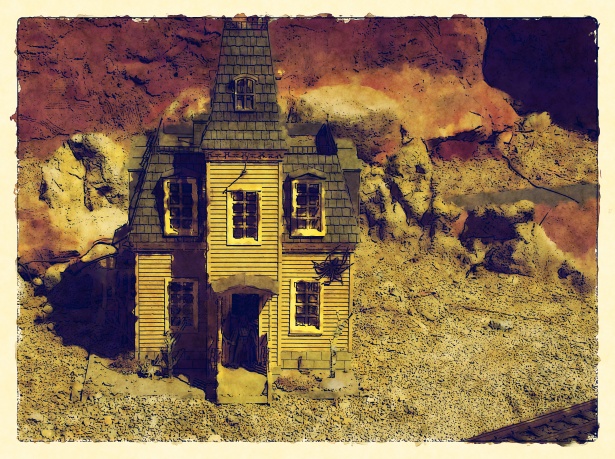
The instrumentals that follow are squelchily diverted but over-crowded. I should remind the reader, however, that I am still in a certain amount of bodily discomfort following my bicycle crash and, as such, my tolerance for auditory discord may be lower than usual. Still, some rather charming horns and twinky bits remind me of the prettiest parts of The Residents’ Not Available (1974) amongst all the chaos. There is some impressively tweedly guitar playing (really wringing out the neck of the guitar) that Fred Frith would likely find agreeable. Perhaps if I listened yet again my ears would align upon a different element.
‘Where We’d Choose to Be’ apparently follows after this bridge, according to the Dots lyrics and reviews site ‘Brainwashed‘ [which is always a reliable source of information on the band and greatly appreciated when writing these reviews]. The lyrics sketch a straightforward home invasion/ folk horror narrative of a couple finding a secluded house for themselves, only to find themselves… not alone! It sounds like a long-lost Dots or Ka-Spel solo track from the early ’80s. It is a simple thing, but effectively creepy and gothic. Musically it would belong all the way back on Basilisk in 1982, which Tom and I reviewed almost a decade ago, which shows that calendar time is ludicrous and absolutely not to be trusted. Bells chime in the rain at the end of the track. Some kind of clangorous cosmic train pulls into the station. There is a miniature demonic dance party. The drums go into that ’90s echoey/ compressed industrial dance mode which I don’t like very much, partly because it sounds like a phaser effect has been applied to a perfectly good drum beat! There is a lot of messing about on synthesizers and generally chaotic jamming until a imposing horn sound effect (echoes of OMD’s Dazzle Ships, their 1983 artistic peak) interrupts proceedings and a serene synth wash restores things to vaporwave normality. The track plays out on a sample from an ancient vinyl recording that only a listener as astute and cultured as Tom would be able to identify!
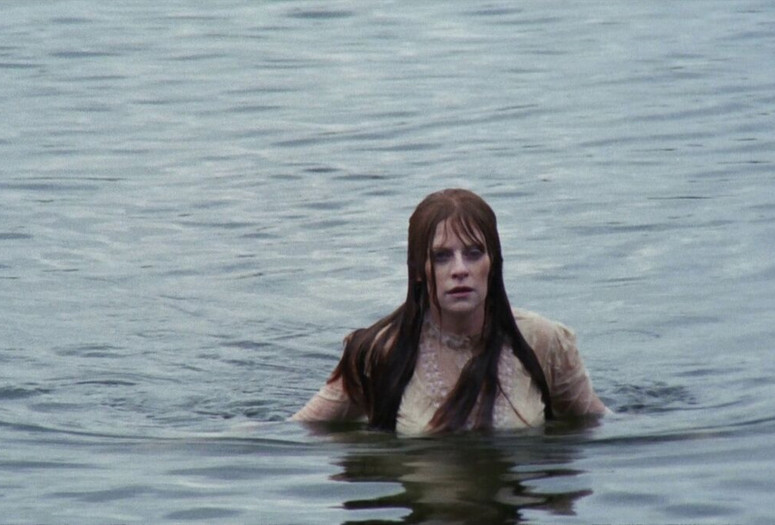
It this all sounds like a lot… it really is. It is a richly fascinating experience, but one that provides you with frustratingly few points of anchorage. My collage was only able to capture a fragment of it. Enjoy the freefall.
After this somewhat pummelling experience, ‘CP 12 Part 2’ is comparatively sedate, with a Eno-like piano melody played forward and then in reverse over the top of faint vinyl crackling. Vocals murmur, also backwards tracked, less sinister than the Twin Peaks (1990-1991; 2017) Red Room denizens. It almost seems to anticipate the haunted hypnogogic ambience of The Caretaker. It burbles and murmurs at its own strange and sleepy pace, seemingly unbothered by the listener’s attentions, refusing to resolve until it is ovetaken by the crackling of fire and a ghostly choir about 8:00 minutes in. After this, we are firmly in Spectrescapes (2014-2016) territory, with the kind of spooky wind-swept music that could be perfectly used for fan-made music videos of 1960s/ 1970s low-budget independent art house horrors like Carnival of Souls (1962) or Let’s Scare Jessica to Death (1971) or George A. Romero’s recently rediscovered and restored elderly abuse P.S.A. The Amusement Park (1975). Finally, before the end, the deathly pipe organ stirs into discordant life with Ka-Spel imploring the listener to “wake up”! There are a couple more obscure and manipulated samples – possibly from the Dots’ own back catalogue – and we’re over and out!
Volume 13: I Can See Clearly Now (I Think)
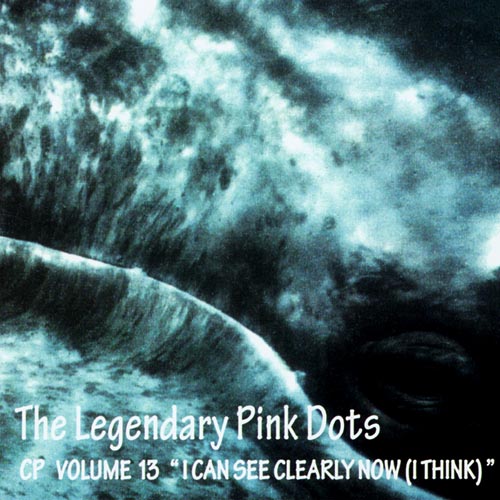
Tom: I am listening to this not in a dream state, but after nearly two hours of gardening out the front of the house on Sunday 25 June. Refreshed, I sit back after having an ice-cold coca cola, and listen to ‘Volume 13‘. Its 63 minutes begin with distant ebbing sirens and spacey synth sound effects. Bass and organ and then drums as ‘Touched By the Moon’ commences. A rare saxophone on this and lyrics about waiting for the storm in the summer, rather like me sitting out in the back garden in Wylam this afternoon. This is a minor-key yearning track, steadily effective. Then is an instrumental, horns and buzzing electronic arpeggios, okay, but not the most compelling.
‘No Names’ emerges around 14mins, a tale of disturbed, disturbing “Christian” witch-hunters, as in Witchfinder General (1968) or the historical thread in Elle McNicoll’s A Kind of Spark (2020 novel, 2023 TV series). ‘It’s Ticking (But Not For You)’ is a granular instrumental with submerged brass band sounds, like Durham on July’s Big Meeting day through a gauze, perceived as totally irrelevant by Blair’s Labour Party in 2002. This is one of the key LPD tracks evoking time, with its ticking clock, a key motif embedded in certain Volume 12 moments. The sleeping giant of the Labour Movement, that rarely ever knows its potential power and flexes its muscles whether strikes or sabotage. Clock time exerts the malign, dulling control over workers, school children trained by the hidden curriculum. A few notes sounding like a choral hymn at 23 minutes, and then a grand warping opera singer sample.
‘Cat’, heard now in the context of a ridiculous overblown row about a Sussex school and “identifying as a cat” where two kids recording a lesson discussion and uploading it to TikTok are taken to be cause celebre and not dubious pawns or even bullies. Britain’s press always makes it both trivial and constrains any nuance and humanity. The song is a gnomic iteration of a tiger’s enigma, being used in a show where people keep their distance, avoiding the front row…
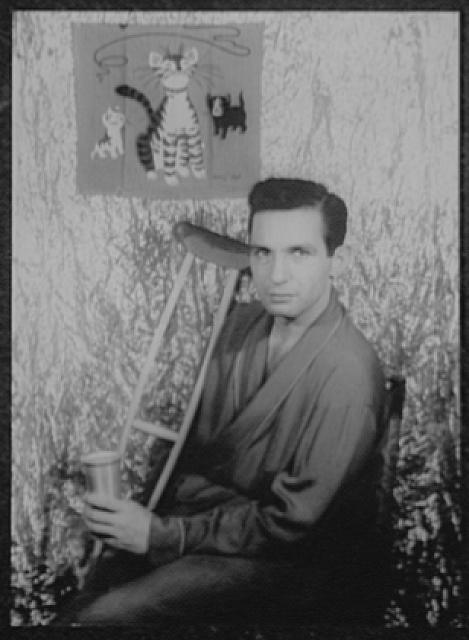
‘On A Hot Tin Roof’ completes the Tennessee Williams’ play and film title and is a noodling and then looping instrumental, with a distorted cough, about which there isn’t a great deal to say overall. ‘Sleeping (But Not Sick)’ is a delicate, low-key piano tune where Ka-Spel’s lyric is direct and therapeutic, as far as that’s possible for an LPD track, advising not to give up but to live and give, and not be “dismayed by mere events”. Wise words.
‘Push The Pie’ is a skittering, bleeping and glitch instrumental, makes you wants you to revisit Opal and Autechre. After a low-key start, ‘Part Two’ has violin and synth entangling like psychic dough, or coriander and fenugreek in the curry. This becomes a minor LPD juggernaut ‘Part Three’ has some submerged, proto-hauntological sounds again, very distant and indistinct, it might be that brass band again, but now far less audible. Being erased from the picture and the history.
‘Learning To Swim’ feels hermetic, private, though “the border” and “the fence” and “bullets” seem to evoke the public liminal lands of Berlin, or Vienna, say, carved into zones, or Casablanca in the great 1942 film. ‘Still No Names’ feels like a systemic processional ritual rendered as a strange electronica instrumental in a brace of minutes. ‘Pedestal’ opens with a buzzing sound, a bee, a drill, certainly a bad portent. It is the last main song here, and seems another pointed LPD critique of Rambo (1982–) film heroics which linger most today within first-person shooter video games, which I recently witnessed Joe Pattinson eloquently analyse in an Arts and Social Sciences Post-Graduate Researchers’ seminar I chaired. This has a drawn-out scream at one point and woozy, unstable, lurching rhythm which is played as much on a stringed instrument as the submerged drum. While there have been exceptions, barely any shooter games will centre on the aftermath of killing people, let alone any political context or embroil you in complex decision making processes which lead to war.
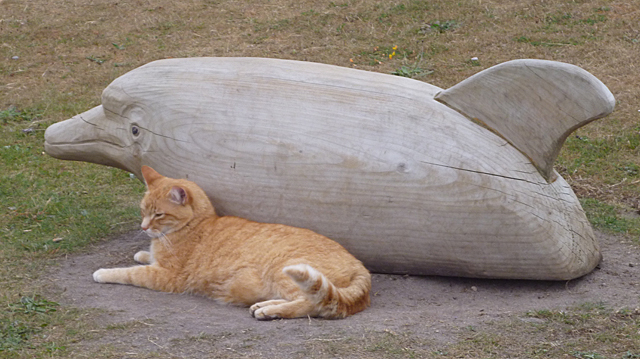
‘I Told You… No Goddamn Names’ has further use of backwards vocals, that old devilish trope. While it’s strange enough, it doesn’t really feel all that weird having heard so much LPD music in gradual succession as we have! ‘OK, It’s Betsy The Bumblebee’ is a splendid violin-led canter which evokes a beautiful bee buzzing around the white roses in the garden. Bass guitar, MIDI and meowing Moog sounds and a purposeful, deft lead guitar join in to very lovely effect. The 47-second chemical coda is ‘Bye Bye’. We hear that sampled dialogue (?) I’d misheard back on their 1995 LP, which I know identify clearly as: “Make bloody damn sure you came back as a dolphin!” Well, absolutely, just hopefully not one that is corralled into being a Russian spy!
This release is a fine mammoth three-hour trip. While I’d say that Volume 12 engages my feelings and thoughts the most, there’s so much buried in this vast forbidding kaleidoscope. Listen while enjoying some herbal medicine, or even relaxing out in the garden on a Sunday afternoon. It will not so much twist your melons as mess with your cucumbers, marras…


Adam: Like Tom, I find ‘CP 12’ the most arresting of these three interwoven installments, but ‘CP 13’ contains its own stretches of intrigue. It begins with what sounds like an alien spaceship going haywire before settling down into a slinky and feverish l̶o̶v̶e̶ lust song in which Ka-Spel compels his lover to “take [his] blackened hand and lick it”, repeating, “A touch is all I need…” The narrator speaks as though he has been martryed – woe-begotten and abject – and I wonder if it is supposed to be Jesus imploring Mary Magdalene. To a contemporary listener, Niels van Hoorn’s sax strikes a distinctly vaporwavey note, as though the song were unfolding in one of the pleasure gardens or beachside condominium of 2020’s weird city pop indie detective game Paradise Killer. After this chilled and creepy little pleaser, the murk descends again for a while, with another eerie soundscape. Things all go a bit “the sky above the port was the color of television, tuned to a dead channel” until a rhythmic groove reminiscent of Side A of The Maria Dimension (1991) gets underway. I wonder if this is the music that Cyberdog in Camden used to play circa 2001! Indeed, I wonder if the next full track dates from this period since it is similarly concerned with religious hypocrisy and persecution. Although, that side, this is enough of a perennial concern of Ka-Spel’s that it was explored as recently as the opening track ‘Lent’ on previous album A Perfect Mystery (2000). Apparently the track here is called ‘No Names’ and, while sinister, I find it a bit sluggish and certainly not as compelling as the classic ‘Stoned Obituary‘ all the way back on Curse (1983) [with the memorable “die with your eyes on” lyric].
A ticking cloud intrudes, anchoring cosmic time to man’s dreary spatialisation of the same… though reversed and looped sounds suggest that the clock can only impose its quantitative measurements, not actually control the weird currents of time. I imagine that if one were to have listened straight through to the record in a darkened room up to this point, that this is round about when your consciousness would start leaving your body to go spinning about the room. Listening, instead, to ‘CP 12 Part 1’ on its own on an oppressively barmy July evening, my laptop perched upon my knees, the effect is inevitably diminished. I do, however, have Benson and Moorhead’s Something in the Dirt (2022) borrowed on my Amazon account ready for me to watch, so time travel is on my mind!
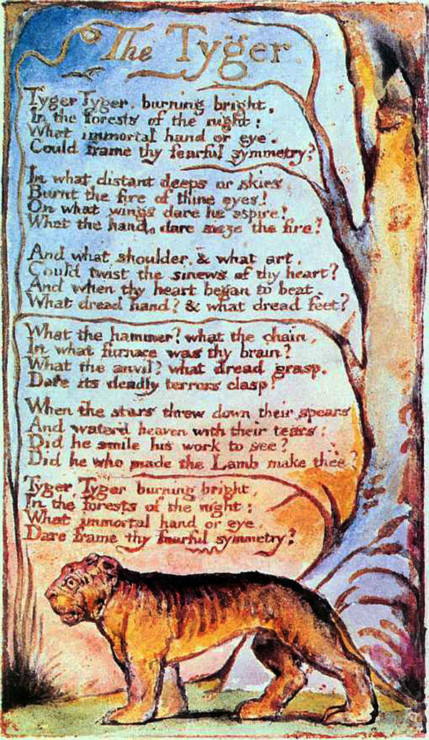
The next track revisits the old humdinger ‘Hideous Strength‘ from Chemical Playschool 3 & 4 (1983) but with a great deal less urgency and a lot more languid guitar. The lyrics begin with an allusion to Blake’s “Tyger! Tyger! burning bright” before relating a story of a cat (Bastet?) that keeps her light burning inside, unlike the more extroverted lion-identifying Leo of ‘Hideous Strength’. While Tom notes how spurious the articles about supposed cat-identifying teenagers in schools are, I will admit to a certain sympathy with the often-mocked otherkin and furry communities, not least because I think that they tend to attact autistic individuals who feel alienated from neurotypical social and cultural norms. This is just an association, however, since the song is short and cryptic and does not delve into the depths of human/animal self-identification one way or the other. It is an intriguing little ditty, but not a vital one. The clanging metal (almost kalimba-like) of the next track is not quite heavy enough to stand against Tom Waits’ Bone Machine (1992) though Edward’s(?) cough is just as hoarse as Waits’ voice! By contrast, ‘Sleeping (But Not Sick)’, which follows, is gentle and delicate, with a sleepily descending piano underscoring Ka-Spel’s kind advice “Don’t give in/ So much to live for/ To give, sure/ The past’s imperfect/ Present’s tense/ Be not dismayed/ By mere events”. It’s like the Dots own version of ‘Everybody Hurts’!
Gentle sentimentality (much appreciated in this long haul of an album!) does not last long, overtaken by computerised burbling and an indiscernible choppy vocal sample. Things become obscure and intriguing – indeed, even exciting once a violin comes in!! Could our beloved Patrick Q. Wright have returned? If not, someone is doing a great impression of his playing style. The cosmic space rock that follows is a minor highlight, with some soaring guitar playing that judiciously does not overwhelm or obscure the violin. The track ends with a playful electronic arpeggio that fades in and out until we get what sounds at first like operatic warbling and then a theramin and then a glass being rubbed around its rim until it vibrates. It is all the same sound, however. The UFO has landed.
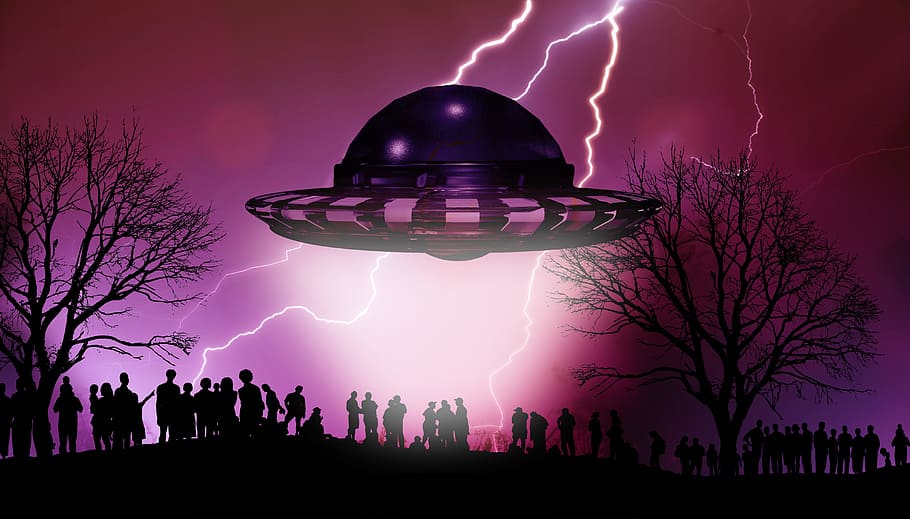
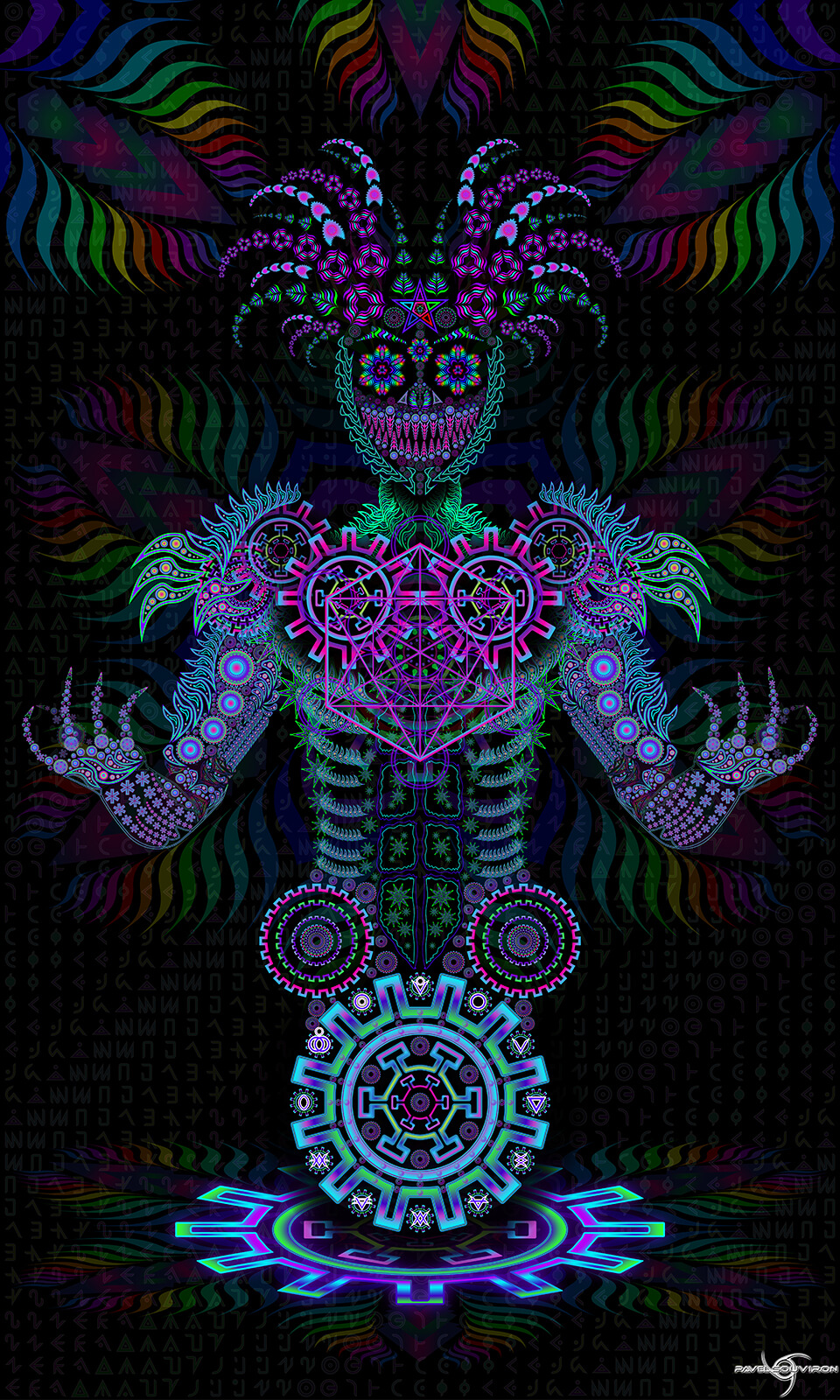
Finally, ‘CP 13 Part 2’ spends little time before giving the listener another song with vocals, the irresistable eerie ‘Learning to Swim’. The instrumentation is very slight, but the lyrics, which seem to be about learning from a past friend or relationship, imagining you are talking to them when they are absent, spoke quite a lot to me (having lost several friendships for various reasons around the time of the Covid-19 lockdowns). Another low-key Bone Machine-style instrumental follows, though with signature Phil Knight time-reversing hokery pokery over the top of it. This collapses into an almost John Carpenter-like sequence of the kind used to score Adam Curtis documentaries! The lyrics are obscure, but seem to be about the tension between television war heroics and the reality of war… or perhaps war as a hyper-real event a la Baudrillard’s argument in The Gulf War Did Not Take Place (1991). While the central musical motif is an effective one, the track is a fair bit longer than it needed to be in my opinion. Still, with an album as long as this one, if you don’t enjoy one track, it’s on to the next! Ka-Spel is soon whispering (and gurgling?) like a demon through the speakers and damned unearthly, unpleasant noises are right up in your ears. Apparently the track is called ‘I TOLD YOU … NO GODDAMN NAMES’ [choosing to keep the capitals] and it has nasty goblin energy. It gives me the fear in the way that Current 93 and Suicide often give me the fear.
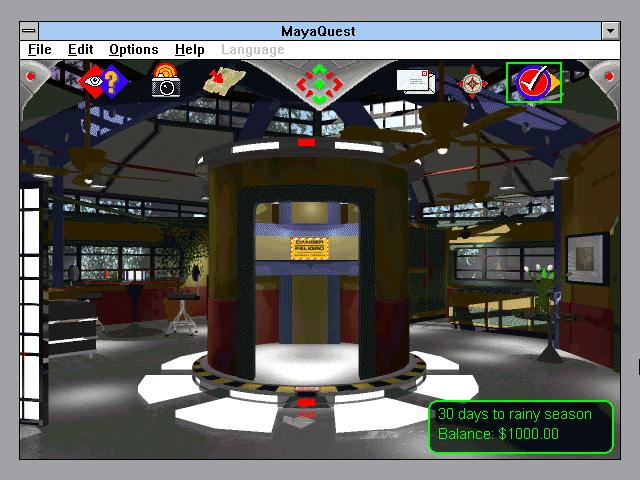
And then, after such an auditory horrorshow, the Dots gift the patient and persistent listener with what is, for me, their most beautiful piece of music since the gorgeous middle section of ‘We Bring the Day‘ on Malachai (Shadow Weaver, Part 2) (1993). The track is made of what sounds like a MIDI glockenspiel and a lilting violin melody. For me, it sounds like the purest edutainment music, the aesthetic of which vaporwave artist Daniel White recently tried to capture on his album Pangeapedia Plus (2021). For me, Minnesota Educational Computing Corporation (MECC) edutainment games like The Secret Island of Dr Quandary (1992) and Museum Madness (1994) were an integral part of my childhood and even more nostalgic than Simpsonswave. I am not claiming that the Dots invented vaporwave a decade before Ramona Andra Langley/ Vektroid, but back in 2001 they were tapping into some similar currents.
Overall, I would rank ‘CP 13’ just behind ‘CP 12’ and above ‘CP 11’, but these releases were intended ultimately to be listened to as a whole. Indeed, listening to this album on anything less than a decent pair of headphones (in the dark) is like watching a David Lynch film on your phone. It is designed to be an immersive, transfigurative experience, but you need patience to undergo the transformation. Since the attention span of many adults has only decreased since 2001, it is hard to know whether this ambitious, majestic (albeit sometimes frustrating) release will ever get the listenership it deserves.
